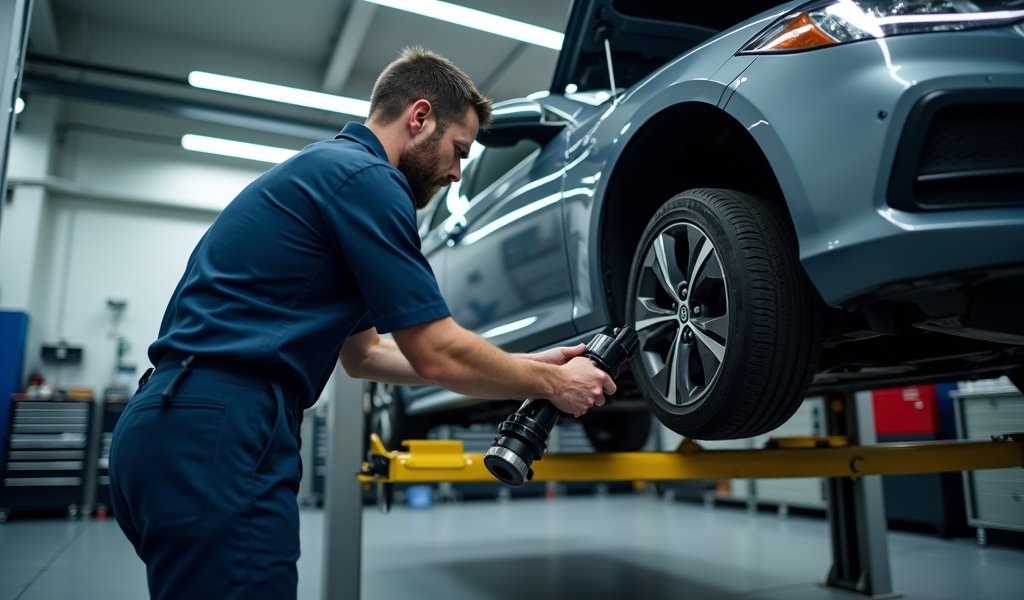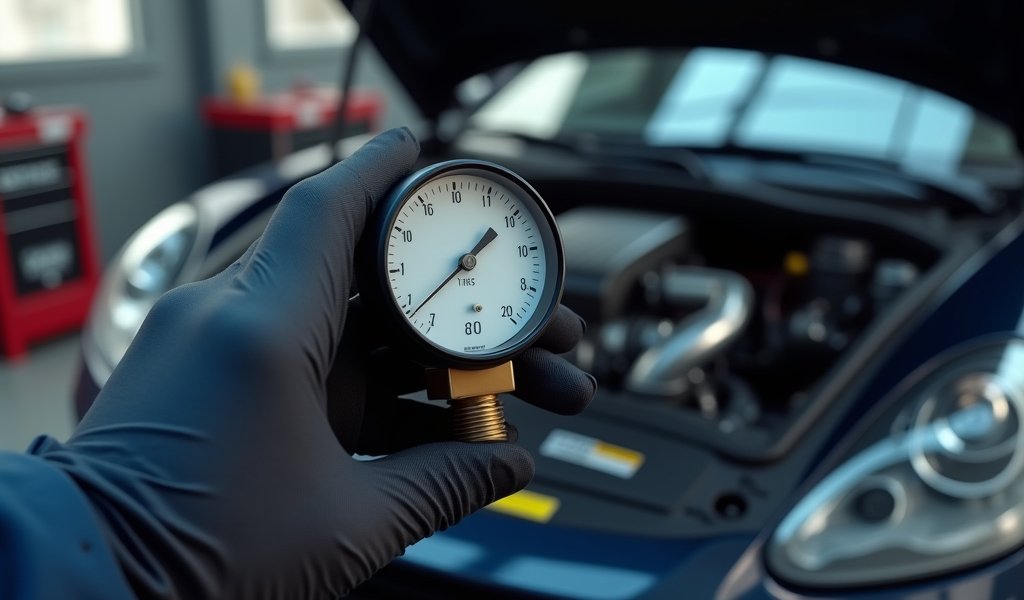Overview
This article explains how brake booster vacuum systems work in vehicles, covering signs of failure, testing methods, common causes of problems, and five specific fixes ranging from simple hose replacements to complete booster replacement. It emphasizes the safety-critical nature of brake systems and provides guidance on when to perform DIY maintenance versus seeking professional help, along with preventive maintenance tips to avoid brake failures.
Table of Contents
- Understanding Brake Booster Vacuum
- Signs of Brake Booster Vacuum Problems
- How to Perform a Brake Booster Vacuum Test
- Common Causes of Vacuum Booster Failures
- 5 Best Fixes for Brake Booster Vacuum Issues
- When to Seek Professional Help
- Preventive Maintenance Tips
- Conclusion
- Frequently Asked Questions
Understanding Brake Booster Vacuum
When you press your brake pedal, the brake booster vacuum system is the unsung hero that makes stopping your vehicle feel effortless. This ingenious system uses vacuum pressure to multiply the force you apply to the brake pedal, making it possible to stop a 4,000-pound vehicle with just a light tap of your foot. Without a properly functioning brake booster vacuum, you’d need the leg strength of an Olympic weightlifter to bring your car to a halt!
The brake booster vacuum system consists of a vacuum chamber, check valve, and diaphragm that work together to create that power-assist we all take for granted. In most gasoline engines, the vacuum is generated naturally by the engine’s intake manifold, while diesel or some newer gasoline engines might use a separate vacuum pump to create the necessary suction. When this system starts to fail, your safety is on the line – and that’s why knowing how to perform a brake booster vacuum test becomes essential for any vehicle owner.
Think of your brake booster like a loyal assistant who’s been multiplying your braking efforts for years without complaint. Now that it’s potentially having issues, it’s time to give it some well-deserved attention. Understanding how this system works is the first step in diagnosing and fixing any problems that might be developing under your hood.
Signs of Brake Booster Vacuum Problems
Your vehicle has ways of telling you when the brake booster vacuum system isn’t happy, and these signs shouldn’t be ignored. The most obvious symptom is a hard brake pedal that requires significantly more effort to press down. If you suddenly feel like you’re doing leg presses at the gym every time you need to stop, your brake booster vacuum system is likely failing.
Another telltale sign is increased stopping distance. When your brake booster isn’t providing that vacuum-assisted boost, your vehicle will take longer to come to a complete stop—a dangerous situation in emergency braking scenarios. You might also notice the brake pedal feeling different when the engine is off versus when it’s running. In a healthy system, the pedal should be much firmer with the engine off than when it’s running.
Some vehicles will alert you with a warning light on the dashboard when vacuum pressure falls below optimal levels. Modern cars are equipped with sensors that monitor brake system performance, including the vacuum assist function. Additionally, you might hear a hissing sound when pressing the brake pedal, indicating a vacuum leak in the booster or its connecting hoses.
Intermittent brake performance is another warning sign that should never be ignored. If your brakes work fine sometimes but require extra effort at other times, the vacuum booster might be failing or experiencing vacuum leaks. These brake system irregularities demand immediate attention because they directly impact your ability to stop safely.

How to Perform a Brake Booster Vacuum Test
Testing your brake booster’s vacuum system isn’t as complicated as it sounds, and with a few simple steps, you can determine if it’s functioning properly. I’ve performed this test countless times in my shop, and it’s a reliable way to diagnose brake booster problems without specialized equipment.
Simple Engine-Off Engine-On Test
This is the most basic test that anyone can perform:
- Start with your engine off and press the brake pedal several times until you feel the pedal become firm
- Hold the pedal down with steady pressure
- Start the engine while continuing to hold the brake pedal
- If your brake booster is working correctly, the pedal should drop slightly and become easier to press as the engine starts
This movement occurs because the engine creates vacuum that activates the booster, providing that power assist we rely on. If the pedal doesn’t “give” when the engine starts, your brake booster might not be receiving proper vacuum.
The Hold and Start Test
For a more thorough evaluation, try this slightly more involved test:
- With the engine off, pump the brake pedal 4-5 times to deplete any remaining vacuum
- On the final pump, keep the pedal pressed down firmly
- Start the engine while maintaining pressure on the pedal
- Hold this position for about 30 seconds
In a properly functioning system, you should feel the pedal move downward slightly when the engine starts and stay in that position. If the pedal gradually rises back up while you’re holding it, there’s likely a vacuum leak in your booster system that needs addressing.
For those wanting to get more technical, you can use a vacuum gauge connected to the intake manifold to measure the actual vacuum level. A healthy system typically shows around 16-22 inches of mercury (Hg) at idle. Anything significantly lower might indicate vacuum supply problems affecting not just your brakes but potentially other engine functions as well. Making these diagnostic checks regularly can prevent more serious brake failures down the road.
Common Causes of Vacuum Booster Failures
In my years turning wrenches, I’ve seen brake booster vacuum systems fail for numerous reasons. One of the most common culprits is a damaged vacuum hose connecting the engine’s intake manifold to the booster. These rubber hoses deteriorate over time, developing cracks or becoming brittle, especially in extreme temperatures. Even a tiny hole can compromise the entire vacuum system.
The check valve is another frequent failure point. This one-way valve is designed to maintain vacuum in the booster even when engine vacuum fluctuates or drops momentarily. When this valve fails, it can either stick open (causing vacuum leaks) or stick closed (preventing vacuum from reaching the booster). Either way, your brake performance suffers dramatically.
Internal diaphragm failure is perhaps the most serious issue. Inside your brake booster is a rubber diaphragm that separates the two chambers necessary for the system to work. Over time, this diaphragm can develop tears or holes, especially in vehicles with high mileage. Once compromised, the diaphragm cannot create the pressure differential needed to multiply your braking force.
Some vehicles, particularly those with diesel engines or newer fuel-efficient gasoline engines, use dedicated vacuum pumps since these engines don’t naturally produce enough vacuum. These pumps can fail mechanically or electrically, leading to the same symptoms as other vacuum booster problems.
Clogged vacuum ports or passages represent a less obvious but equally problematic cause. Carbon buildup, oil contamination, or debris can restrict vacuum flow to the booster. This gradual restriction might explain why some vehicles experience intermittent brake performance issues that worsen over time.
Understanding these common failure points helps diagnose the specific issue affecting your vehicle and guides you toward the appropriate fix, potentially saving hundreds in repair costs by addressing the exact problem rather than replacing the entire system.
5 Best Fixes for Brake Booster Vacuum Issues
After diagnosing your brake booster vacuum problem, it’s time to implement the right fix. Here are the five most effective solutions I’ve used throughout my career:
1. Replace Damaged Vacuum Hoses
This is often the simplest and most cost-effective fix. Vacuum hoses are relatively inexpensive and usually accessible without major disassembly. Inspect all hoses connecting to the brake booster for cracks, splits, or deterioration. Even a pinhole leak can cause significant vacuum loss. When replacing hoses, use high-quality vacuum hose rated for brake systems—not generic fuel line or other tubing. Ensure all connections are tight and secure with appropriate clamps where needed.
2. Check Valve Replacement
The check valve is crucial for maintaining vacuum in your brake booster. If your tests indicate check valve failure, replacing this small component can often restore proper brake function. The valve is typically located in the vacuum line near where it connects to the booster or sometimes built into the booster itself. This is generally an inexpensive part (usually $10-30) that can prevent the need for more extensive repairs.
3. Brake Booster Replacement
When the internal diaphragm fails or the booster housing cracks, complete replacement becomes necessary. While more expensive than fixing hoses or valves, replacing the booster unit resolves internal failures that can’t be repaired piecemeal. This job requires moderate mechanical skill as it involves disconnecting the master cylinder and various vacuum lines, plus properly adjusting the pushrod length on installation. For most vehicles, expect to pay $200-400 for the part plus labor if not doing it yourself.

When to Seek Professional Help
While diagnosing and fixing vacuum booster issues can be a rewarding DIY project, there are certain situations where professional help isn’t just recommended—it’s essential. If your brake pedal suddenly becomes extremely hard while driving, safely pull over and call for assistance. This sudden failure could indicate a major brake system issue beyond just the vacuum booster.
Any time brake repairs involve opening the hydraulic system (like when replacing a master cylinder alongside a booster), proper bleeding is critical to remove air from the lines. Air-contaminated brake fluid creates spongy, ineffective brakes. Professionals have specialized equipment to ensure complete bleeding of modern ABS-equipped brake systems, which can be challenging with DIY methods.
If you’ve replaced vacuum hoses, the check valve, or even the booster itself and still experience problems, a more complex issue may be at play. Modern vehicles with integrated electronic brake assist systems require specialized diagnostic equipment to properly identify and resolve certain issues that might present similar symptoms to vacuum problems.
Consider seeking professional diagnostics if your brake system warning lights remain illuminated after repairs. These warning systems monitor multiple aspects of brake performance, and persistent warnings indicate unresolved issues that could compromise safety. A reputable shop will have the diagnostic tools to read specific fault codes that can pinpoint exactly what’s still malfunctioning.
Remember that brake system integrity directly impacts your safety and that of others on the road. If you’re uncertain about any aspect of diagnosis or repair, consulting with a qualified brake specialist is the prudent choice. According to the National Highway Traffic Safety Administration, brake failures contribute to approximately 22% of mechanical-failure crashes—a statistic worth considering before tackling complex brake repairs without proper knowledge or tools.
Preventive Maintenance Tips
An ounce of prevention is worth a pound of cure, especially when it comes to your brake system. Regular inspections can catch vacuum booster problems before they leave you with dangerously compromised brakes. Make it a habit to visually check vacuum hoses every time you change your oil. Look for cracks, splits, or hardening rubber—these are early warning signs of impending failure.
Pay attention to how your brake pedal feels during normal driving. The pedal should maintain consistent resistance and not gradually become harder to press over time. This gradual change often goes unnoticed until the problem becomes severe, but catching it early can prevent more extensive damage.
For vehicles that use a dedicated vacuum pump (common in diesels and some newer gasoline engines), listen for unusual noises when you first start the engine. A failing vacuum pump often produces a distinctive whining or grinding sound before it stops working entirely.
If your vehicle has high mileage (typically over 100,000 miles), consider having a professional brake inspection that includes a vacuum booster test, even if you haven’t noticed any symptoms. Preventive replacement of aging components can be far less expensive and inconvenient than emergency repairs.
Keep engine maintenance up to date, as poor engine performance can affect vacuum generation. A rough-running engine or one with valve timing issues may not produce sufficient vacuum for optimal brake booster performance. Regular tune-ups and addressing check engine lights promptly contribute to maintaining proper brake system function.
Finally, use quality brake fluid and change it according to your manufacturer’s recommended schedule. While brake fluid doesn’t directly affect the vacuum system, contaminated fluid can damage seals in the master cylinder, which works in conjunction with the booster. Clean, fresh brake fluid is cheap insurance against more extensive brake system problems.
Conclusion
The brake booster vacuum system may be one of the less glamorous components of your vehicle, but its importance can’t be overstated. This humble system is what transforms a light press of your foot into enough stopping power to safely control thousands of pounds of moving metal. By understanding how to perform a brake booster vacuum test and knowing the signs of failure, you’re empowering yourself to maintain one of your vehicle’s most critical safety systems.
The five fixes we’ve covered—replacing vacuum hoses, check valve replacement, complete booster replacement, vacuum pump servicing, and addressing intake manifold issues—address the most common causes of brake booster problems. Whether you’re a DIY mechanic or someone who prefers professional service, knowing these solutions helps you make informed decisions about your vehicle’s maintenance.
Remember that preventive maintenance is always less expensive and less stressful than emergency repairs. Regular checks of your brake system, including the booster vacuum, should be part of your vehicle care routine. Your brake pedal should always feel consistent and provide confident stopping power—anything less demands immediate attention.
When it comes to brakes, there’s no such thing as being too cautious. If you’re uncertain about any aspect of diagnosis or repair, consulting with a qualified technician is always the wisest choice. After all, effective brakes aren’t just about vehicle maintenance—they’re about protecting yourself and everyone else on the road.
Frequently Asked Questions
How often should I test my brake booster vacuum system?
Test your brake booster vacuum system annually or whenever you notice changes in brake pedal feel. Regular testing as part of yearly brake inspections is sufficient for most drivers.
Can I drive with a failed brake booster?
While technically possible, driving with a failed brake booster is dangerous as it requires significantly more force to stop. Only drive to a repair facility if absolutely necessary and use extreme caution.
What’s the average cost to replace a brake booster?
Brake booster replacement typically costs between $300-$700 including parts and labor. The price varies depending on vehicle make, model, and whether additional components need replacement.
Will a bad brake booster cause the ABS light to come on?
Not directly, as they’re separate systems. However, if compensating for a bad booster causes unusual brake pressure patterns, the ABS module might detect this abnormality and illuminate the warning light.
Can cold weather affect brake booster performance?
Yes, extreme cold can cause rubber diaphragms and hoses to become stiff and less effective. Vacuum leaks are also more likely to develop during temperature extremes as materials contract and expand.

